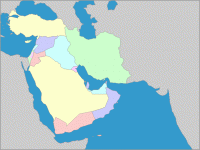Regional director discusses the market’s “strong preference for original products”.
Gulf News hosted a column from Jyoti Lalchandani, Group Vice President and Regional Managing Director for the Middle East, Africa, and Turkey at IDC, who commented on the Middle Eastern cartridge market and its “strong preference” for original products amid “persistent concerns around the quality of aftermarket products”.
Lalchandani notes that “most of” the region feels this way about cartridges, with sales of OEM products “successfully gaining ground” on refilled, compatibles, clones and counterfeits, mostly thanks to “effective campaigns” undertaken by OEMs in the region. Adding that the “battle is far from won”, she then examines the “latest developments in the compatibles market” in order to “consider their implications for the region’s end users”.
Noting that printer cartridge sales for OEMs “have been impacted by the availability of aftermarket consumables, Lalchandani comments that third-party product sales have been “driven by a need to keep prices down” and are, particularly with counterfeits, “often produced with cheaper materials that are more likely to malfunction and ultimately cause the printer to break down”.
Thus, OEMs are “continually implementing new campaigns” to “combat the threat” of aftermarket products, alongside anti-counterfeit raids across the Middle East, and Lalchandani posits that “unofficial imported consumables”, or “grey imports” are the “largest threat” to OEMs in Middle East because they are “original supplies imported through unauthorised channels” that aren’t intended for sale in the market.
Traders will “import large quantities” of these cartridges, price them at a discount, and then sell them to end users who consequently “encounter compatibility issues” due to the cartridges being intended for region-specific machines, as well as poorer quality. OEMs including Xerox have worked with authorities, specifically in Dubai, to counter these imports, with “a significant number” of traders in Dubai and Abu Dhabi caught, fined and their products seized.
To combat remanufacturing and refilling, which she points out are “perfectly legal”, OEMs in the region have introduced higher capacity cartridges, such as HP’s Ink Advantage series, Epson’s continuous ink tanks, Brother’s InkBenefit feature and Canon’s XL range of cartridges, and these offers have made it “much more difficult” for third-party suppliers. The larger capacity cartridges are also “more expensive to remanufacture”, so are thus “much less profitable”.
In laser, OEM toners “maintain a relatively stable share”, particularly in higher-end segments, though Lalchandani notes that some leading third-party vendors, such as GIT Dubai, are “exceptions to this rule” through offering warranties for cartridges and hardware. The OEMs’ “biggest threat” in toner is in the entry-level sector, with “extremely price-sensitive” end users.
Lalchandani concludes that ultimately OEMs “must employ a combination of strategies” to “combat the threat posed by aftermarket alternatives”, particularly as a “significant price differential exists between” the two markets.
